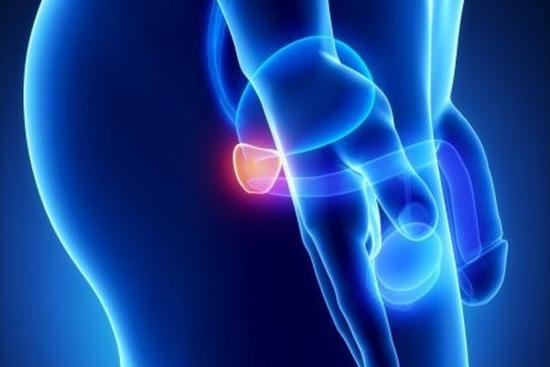The prostate is a chestnut-sized gland of the male reproductive system, located below the bladder and in front of the rectum. It surrounds the urethral canal, which drains urine and sperm. Prostate cancer, one of the most common diseases affecting men, can affect its proper functioning.
Prostate cancer begins when a normal cell undergoes an abnormal transformation and multiplies uncontrollably, forming a tumor. In its early stages, this tumor remains confined to the prostate, but over time it can spread beyond the prostate capsule, the membrane that surrounds and protects the gland. In many cases, however, progression is slow, allowing for early and effective treatment.
Best Clinics with Verified Reviews

- Multispecialized hospital
- 7 operating rooms
- Capacity é of 170 beds
Development of prostate cancer
Prostate cancer develops from a normal cell which, following alterations, transforms and proliferates uncontrollably, forming a tumoral mass. Initially localized within the prostate, the tumor may, over time, grow and cross the prostate capsule, a covering that separates the prostate from adjacent tissues. Subsequently, cancer cells may dissociate from the primary tumor and migrate via blood or lymphatic vessels to infiltrate other organs, such as :
- Surrounding lymph nodes.
- Bones and, in advanced stages, the liver and lungs. These new tumors, called metastases, mark the progression of the disease.
Prostate cancer usually progresses slowly over several years. At the time of diagnosis, doctors conduct a thorough evaluation of the extent and aggressiveness of the disease to determine the most appropriate treatment(s) for each patient.
In Turkey, prostate cancer care is provided by a team of highly qualified healthcare professionals from a variety of medical specialties. Your situation will be carefully reviewed in a multidisciplinary consultation (RCP) involving at least three physicians specializing in urology, radiation oncology, medical oncology and anatomopathology.
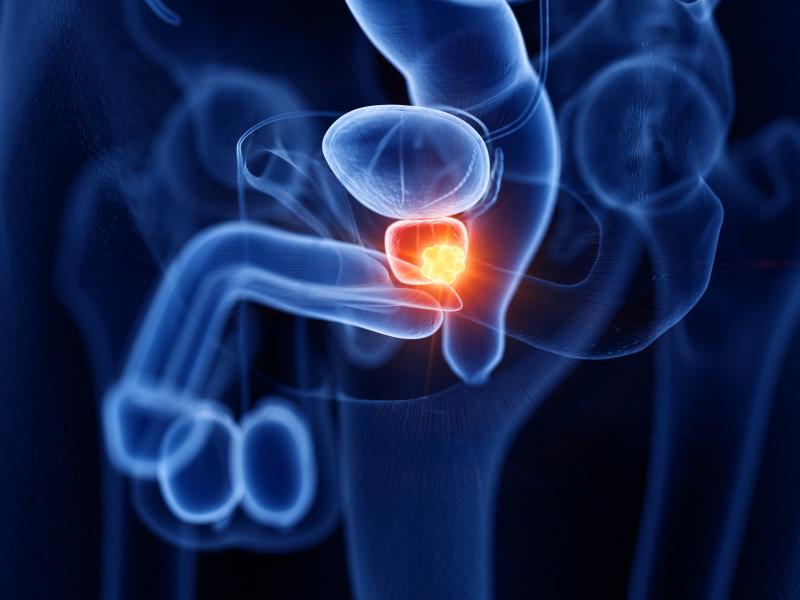
Symptoms of prostate cancer
In its early stages, prostate cancer progresses quietly without causing any symptoms. When it is localized, it usually does not cause urinary problems.
The first signs appear when the prostate increases in volume, causing compression of the urethra. However, this enlargement is not specific to prostate cancer, as it can be caused by much more common pathologies:
- Prostate adenoma (benign hypertrophy),which affects almost all men over the age of 70.
- Prostatitis, an infection of the prostate that affects about 50% of men during their lifetime.
It is also possible for a patient to have both prostate cancer and benign prostatic hypertrophy.
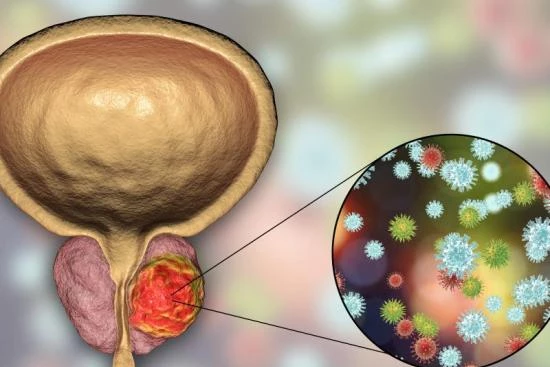
Symptoms of an enlarged prostate
An enlarged prostate can cause several urinary and sexual problems, including:
- A frequent need to urinate, especially at night (pollakiuria).
- A weak stream of urine and a feeling of incomplete bladder emptying.
- Leakage of urine (urinary incontinence).
- Urinary tract infection (cystitis, prostatitis, pyelonephritis).
- Difficulty passing urine, including urinary retention.
- Blood in the urine or semen.
- Erectile dysfunction or pain when ejaculating.
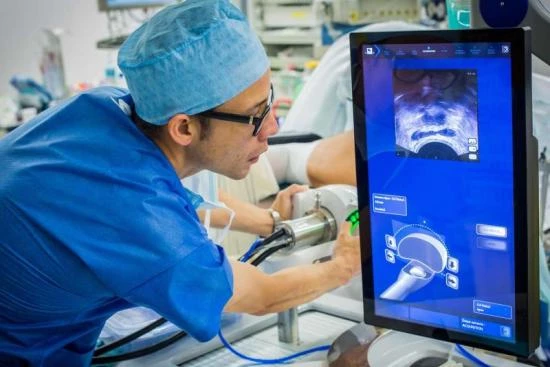
Diagnosis of prostate tumors
The diagnosis of prostate cancer involves several steps. First, the doctor assesses the patient's health, personal and family history, and the presence of symptoms suggestive of prostate abnormalities. A clinical examination, including a rectal examination, is then performed.
Rectal examination
The doctor inserts a gloved finger into the rectum to palpate the prostate and check its size, surface, and consistency. An irregular surface, lumps, or a hard consistency may indicate cancer.
PSA test
If the clinical exam is abnormal, a PSA (Prostate Specific Antigen) test is ordered. A level above 4 ng/ml does not systematically indicate cancer; other factors, such as infection or benign enlargement of the prostate, may explain it. Conversely, a normal level does not rule out the presence of cancer (in about 10% of cases).
Prostate Biopsies
If abnormalities are detected during the clinical exam or PSA test, prostate biopsies may be ordered to confirm or rule out the diagnosis of cancer. These biopsies, performed under local anesthesia, allow anatomopathologic analysis of the tissue removed.
Systematic prostate biopsies
Performed under local anesthesia, these consist of at least 12 ultrasound-guided samples, usually taken transrectally. Antibiotic therapy is systematically prescribed to prevent infection. Transcutaneous biopsies through the skin of the perineum are also possible.
Common complications include hematuria, hemospermia, and rectal bleeding. More rarely, serious infections or urinary retention may occur.
Targeted biopsies after MRI
MRI can identify prostate lesions and guide biopsies, which can be targeted or combined with systematic biopsies, depending on the clinical indication.
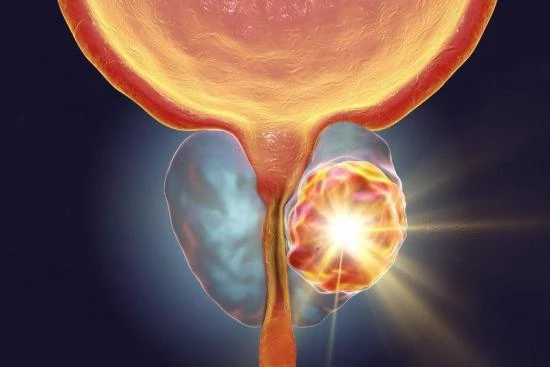
Prostate cancer: Treatment options in Turkey
In Turkey, treatment options for prostate cancer vary depending on the stage of the cancer, the patient's age, and general health. The most common treatments include:
Total prostatectomy
Radical prostatectomy, or total prostatectomy, involves the complete removal of the prostate and, in some cases, the seminal vesicles and surrounding lymph nodes. Performed by an urological surgeon, this is the standard treatment for localized low to intermediate risk prostate cancer. It may be combined with radiation or hormone therapy, especially for high-risk, locally advanced cancers or those involving lymph nodes.
External radiation therapy
External beam radiotherapy uses radiation to destroy cancer cells by stopping them from multiplying. The radiation is precisely targeted through the skin to the prostate while sparing as much of the surrounding healthy tissue (bladder, rectum, anal canal) as possible.
3D conformal radiotherapy adapts the radiation beam to the shape of the tumor. An advanced technique, Intensity Modulated Radiation Therapy (IMRT),adjusts the intensity of the radiation beam to the shape of the tumor.
Brachytherapy
In brachytherapy, radioactive sources are inserted directly into the prostate. These emit radiation that destroys the cancer cells, with limited effect on nearby tissues. There are two types of brachytherapy:
- Permanent implants: Iodine-125 seeds, often used alone or in combination with hormone therapy.
- Temporary implants: Iridium-192 sources, usually combined with external beam radiation therapy and sometimes hormone therapy.
These treatments must be performed by specialized teams to ensure optimal care.
Active surveillance
In cases of low-risk, localized cancer, active surveillance may be proposed to monitor disease progression before starting treatment. This approach makes it possible to delay the start of treatment and its side effects. It includes regular check-ups with PSA measurement and periodic biopsies.
Prostate cancer treatment in Turkey is provided in state-of-the-art medical facilities that offer personalized care and expert guidance.
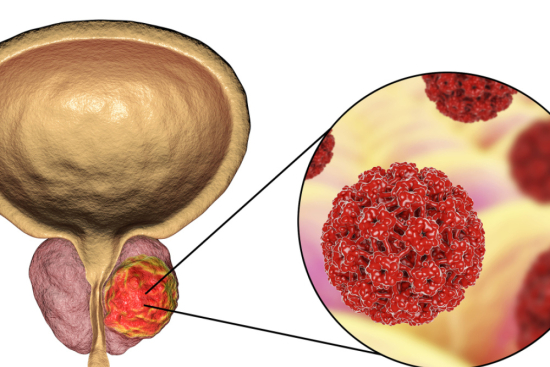
Lutetium-177 PSMA in metastatic prostate cancer
A major advance in the treatment of metastatic castration-resistant prostate cancer has been confirmed in a large clinical trial conducted in Turkey. Lutetium-177 PSMA-617, a next-generation targeted therapy, offers new hope to patients whose disease has progressed despite conventional treatment.
This innovation is based on a vector molecule that identifies and specifically targets cancer cells, coupled with a radioactive element that delivers a precise dose of radiation. This cutting-edge technology effectively eliminates malignant cells while sparing surrounding healthy tissue, thereby limiting side effects.
The results of the study show that patients who received Lu-177 in addition to standard treatment benefited from a significant increase in life expectancy compared to those treated with conventional therapies alone.
This medical breakthrough positions Turkey as a key player in providing access to next-generation oncology treatments, paving the way for more effective therapeutic options for patients with metastatic prostate cancer.
Prostate cancer treatment with Turquie Santé
Turquie Santé assists you in the treatment of prostate cancer by providing comprehensive, safe and high quality care. We facilitate access to the best medical care for international patients, ensuring a smooth and efficient experience.
We work with hospitals of excellence, accredited by the Joint Commission International (JCI) and equipped with the latest technological advances in diagnosis and treatment. In particular, our partner facilities utilize multiparametric MRI, ultrasound-guided biopsies and genomic testing for precise, personalized care.
In addition to medical care, we offer comprehensive support, including translation, transportation, lodging, and post-treatment follow-up, to ensure your comfort and peace of mind throughout your treatment journey.
Share this page
- For stages 1, 2, 3, and non-metastatic stage 4, the chances of survival are estimated at 100%;
- In the metastatic phase, 28% of patients survive.
Treatment for prostate cancer in Turkey includes surgery (partial or total prostatectomy),chemotherapy and radiotherapy sometimes combined with hormone therapy.
Almost 40% of men who have had their prostate completely removed complain of erectile dysfunction. However, late functional recovery is possible. Some men resort to drugs, intracavernous injections or the placement of penile prosthesis.
After the total prostatectomy, the patient would be given an injection into the phallus in order to soften and oxygenate the cavernous sponge. After a few weeks, the erection would come back. Sexual activities could therefore be restarted gradually.
